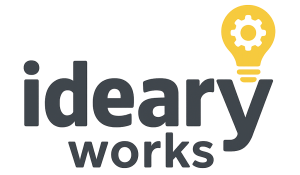Many WordPress site owners wonder whether to tackle accessibility retrofits in house or to engage professional firms. At first glance doing the work yourself seems more economical, especially for smaller sites. Yet hidden time costs, technical complexities, and the risk of incomplete remediation often outweigh the initial savings. Professional accessibility partners bring deep expertise, proven methodologies, and ongoing support that can reduce overall project time, minimize legal exposure, and free your internal team to focus on core business priorities. To make an informed choice, you need to compare the true costs and benefits of each path.
The Allure and Pitfalls of DIY Retrofits
A typical do it yourself retrofit begins with a free automated scan in your browser. Teams run tools such as the WAVE Evaluation Tool or the axe-core extension to identify missing alternative text, low contrast areas, and structural markup errors. They then dive into code changes, editing theme templates to add descriptive attributes, revising CSS to meet contrast ratios, and restructuring headings and lists. For a modest site of fifty pages, an experienced developer might spend one to two weeks executing these tasks if the team already understands accessibility principles. Yet the deeper complexities often emerge late in the process. Legacy plugins can emit inaccessible HTML that resists quick fixes. Page builders sometimes generate UI components without the necessary hooks for labeling. Each new template or plugin component requires fresh testing. As a result timelines can stretch, and frustrations mount, leading to patchy or incomplete coverage that fails real user testing.
Range of DIY Costs
Published industry data suggests that making a site ADA compliant can average four hundred dollars per page when handled without expert guidance hyphadev.io. For a fifty-page site, this equates to twenty thousand dollars in labor hours alone, assuming hourly rates between eighty and one hundred dollars. Moreover, teams must invest in learning resources, attend training, and potentially purchase premium plugins or tools to fill gaps in their capabilities. If retrofits stall or introduce regressions, repeated audits become necessary, inflating budgets and delaying launch.
Professional Accessibility Services and Their Investment
Professional accessibility firms structure engagements to combine discovery, audit, remediation, and training. A typical project for a medium-sized WordPress site ranges from five thousand to fifteen thousand dollars depending on complexity info.usablenet.com. This includes a full audit that blends automated scans and manual user testing, a detailed remediation plan with prioritized fixes, hands-on code corrections, and a final validation report. Many firms also offer training sessions to empower your content authors to maintain compliance as they publish new pages. Ongoing maintenance packages commonly range from two hundred to one thousand dollars per month, ensuring that your site remains accessible as you update content and plugins The A11Y Collective.
Value of Expertise and Risk Mitigation
Engaging professionals yields higher coverage and fewer regressions because they leverage prebuilt scripts, component libraries, and tested remediation workflows. Their teams include accessibility specialists, front end developers, and assistive technology experts who know how to resolve complex issues such as keyboard traps in custom widgets or ARIA role conflicts. Crucially, professional firms often provide liability coverage and a compliance guarantee. If a court or plaintiff challenges your site, you have documented proof of best efforts and expert remediation, significantly reducing legal risk and potential settlement costs.
Long Term Return on Investment
While DIY may shave a few thousand dollars off initial bills, the hidden costs in developer time, repeated audits, and potential litigation can dwarf those savings. Professional engagements deliver not only immediate remediation but also knowledge transfer to your team. With expert training and documentation, your staff can maintain compliance without requiring full vendor intervention on future updates. This sustainability reduces the need for future budget allocations and embeds accessibility into your organizational culture.
Conclusion
For very small and simple sites DIY retrofitting can work if you have in-house expertise and low risk tolerance. However as site complexity grows, the benefits of professional services surpass the initial cost difference. Faster delivery, deeper coverage, ongoing maintenance, and legal safeguards make professional accessibility partners the smarter choice for long term return on investment and inclusive user experiences.
Ready to make your WordPress website ADA-compliant?
Whether you’re just starting or ready to act – we’ll help you build a website that’s accessible, legally safe, and easy for all users to navigate.
- Fully ADA & WCAG 2.1 compliant
- Implemented by WordPress accessibility experts
- No legal guesswork – just clear, secure results




